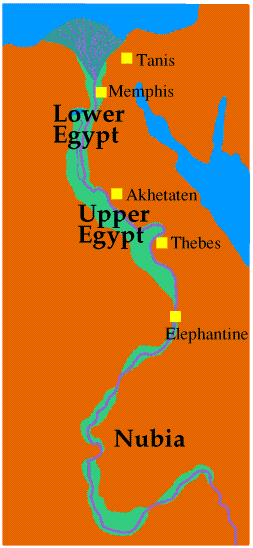
The what Kings?
Exactly.
Very few children are taught about the Tanis Kings of Egypt, probable because very few adults know anything about them to teach them. This Page is written because I was teaching (or rather sharing my love, knowledge and enthusiasm) about Ancient Egypt with a small group of ten year old children, and when I found that one of the children was called Tannice I happened to mention the Tanis Kings, and then I had to promise to tell them about Tanis.
Egypt at the time of the Pharaohs consisted of the narrow strip of very fertile
farmland along the banks of the River Nile, from Elephantine in the south to the
Delta in the north. To the west of this was the Western Desert, to the east the
Eastern Desert, to the south the land of Nubia and to the north the Mediterranean
Sea.

In the days of the Pharaohs Egypt was divided into two parts: the southern part was called Upper Egypt and the northern part was called Lower Egypt. Many people find these names confusing at first because we are used to seeing maps with north at the top. But Upper and Lower refer to the direction of the flow of the river: if you are sailing south along the River Nile you are moving upstream.
Originally Upper Egypt had one king, who wore a White Crown, and Lower Egypt had another King, who wore a Red Crown. We think that the first King of all Egypt was a man called Narmer. He became King of The Two Lands in about 2920. (As all dates in Ancient Egypt are BCE we do not usually bother to say so.) He made his capital at a place called Memphis. This was near modern Cairo, but the River Nile has changed its course several times over the past five thousand years and now the remains of Memphis are buried under several metres of Nile mud.
Memphis was on low ground on the east bank of the River Nile; for a thousand years after Narmer almost all the Kings of Egypt were buried near Memphis but on the other side of the river and on higher ground, so their tombs have not been flooded or covered with mud. The first Kings were buried in simple tombs covered with a simple stone structure called a mastaba, but then a Pharaoh called Djoser, who reigned from about 2630 to about 2611, built himself a much more elaborate tomb, which today we call the Step Pyramid. After Djozer all the Kings of Egypt were buried in pyramids for the next thousand years.
The Egyptians had many different gods, but since before the time of Narmer the most important had been the sun god Re (or Ra). Then in about 1550 a man called Amose became Pharaoh. He came from Thebes (modern Luxor), a town on the River Nile several hundred kilometers south of Memphis. He worshiped a god called Amun. The main temple of Amun was at Thebes and Amose moved the capital of Egypt from Memphis to Thebes. He was the first Pharaoh of the period of Ancient Egyptian history we call the New Kingdom.
The New Kingdom kings were buried not in pyramids but tombs cut into the rock. Most of these were made not near Memphis but in what we call the Valley of the Kings, a few kilometres from Thebes but on the other side of the River Nile. These tombs would have contained vast amounts of gold and other precious things, but most of them were broken into and robbed of everything of value within a few months or years of being built. There are about a hundred tombs in the Valley of the Kings but only a very few of them, the best known being Tutankhamun’s of course, were not robbed in this way.
A Pharaoh called Amenophis iv, also known as Akhenaten, who reigned from 1353 to 1335, quarrelled with the Priests of Amun at Thebes and built a completely new city at Akhetaten (modern Tell el Armama) to be his capital, but the next Pharaoh (Tutankhamen) moved it back to Thebes again.
Under the Kings of the New Kingdom Egypt became very wealthy and powerful, and hundreds of huge and beautiful stone temples were built. Millions of tourists come to Egypt every year to see the Valley of the Kings and the Temples at Luxor. (And of course the pyramids.)
After the death of Rameses ix in 1069 a man called Smendes, who was married to a member of Rameses’s family, became Pharaoh. He came from a town called Tanis, in the north east of Egypt, and he made Tanis the new capital of Egypt. This was the beginning of what we call the Third Intermediate Period, and the Kings who followed Smendes are called the Tanis Kings.
They were buried in quite simple underground tombs, dug into the sand. They tried different ways of making their tombs and eventually developed a type of tomb which was almost totally unrobbable and undetectable.
First they dug a large hole in the sand to build the tomb in, and a shaft beside it
connected to it with a tunnel. Dry sand is very runny so these had to be lined with
mud bricks to stop the sides and tunnel falling in. They laid large stones to form
the floor of the tomb.
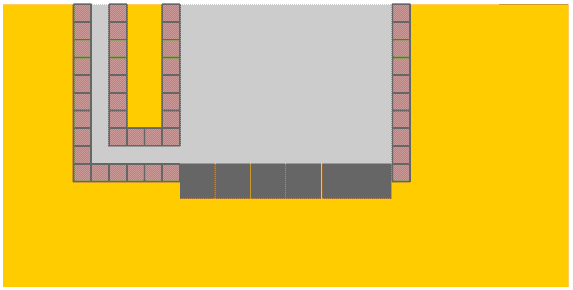
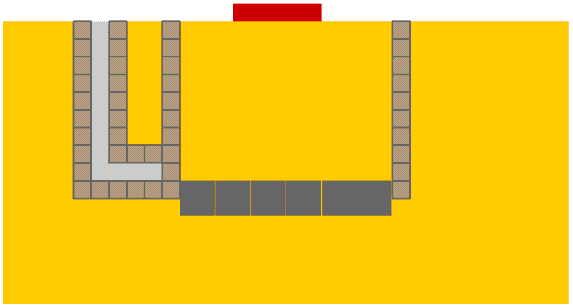
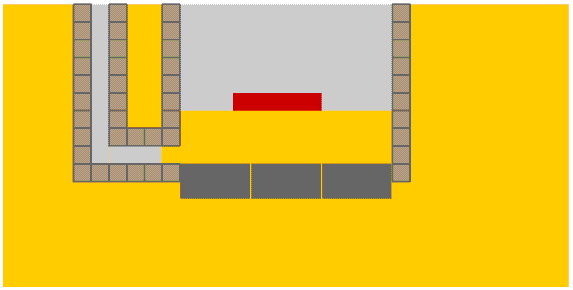
When the sarcophagus reached the bottom they built the tomb round it.
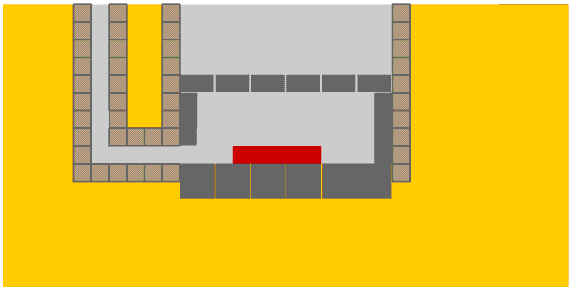
When the tomb was finished they covered it with sand, removing the mud bricks
as they did so, but leaving the shaft as the entrance.
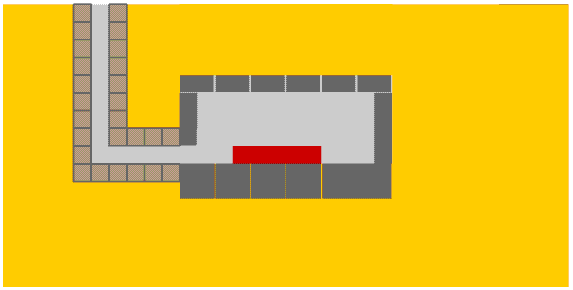
The tomb was now ready. When the owner died his body and all the things to be
buried with him were put into the tomb, the entrance was closed with a stone and
then the shaft was filled in, again taking away the mud bricks.
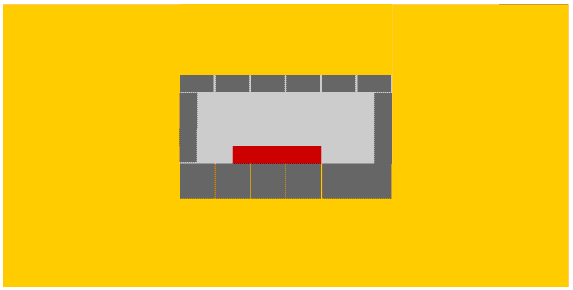
Within a few days the desert winds would have blown the surface sand around so much that no marks showing where the tomb had been built would be visible. There was also no way into the tomb except by digging down into it through the sand - but to do this you would need as many people and as many mud bricks as the tomb builder! So most of these tombs were never robbed, and we think that many of them have not yet been discovered.
Not all the Tanis Kings were buried in tombs exactly like this but even so the
tombs of many of the Tanis Kings were found exactly as they were when they
were sealed.
By the time of the Tanis Kings Egypt was no longer as rich or as powerful as it had been at the height of the New Kingdom, so the buildings and tombs at Tanis are not as wonderful and awe-inspiring as those at Thebes and the Valley of the Kings, and few tourists visit them. But when the tomb of a Tanis King called Psusennes i was opened his mummy, complete with solid gold mask, and most of the other things put in his tomb, were still in perfect condition, and he should have been as famous as Tutankhamun.
This is very simple.
In 1939, and the following years when the tombs of many other Tanis Kings were being discovered, the world’s newspapers had more important stories to carry than archaeological discoveries in the sands of the Egyptian desert...
Actually, the discovery of Tutankhamen's tomb in 1922 is not all that it seems. All the evidence now suggests that Howard Carter knew exactly where it was several years before 1922. It is just that he did not want to announce to the world that he had discovered it until he could be certain that his discovery would make headlines all around the world....
© Barry Gray December 2003